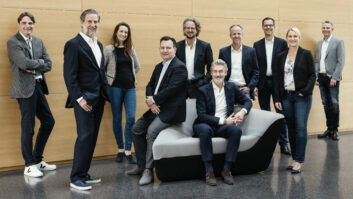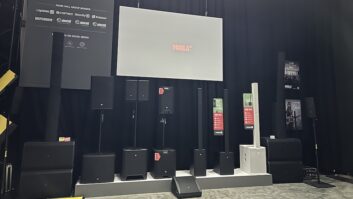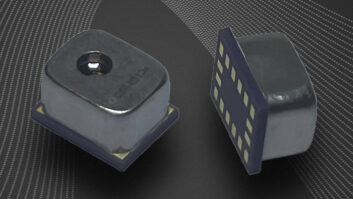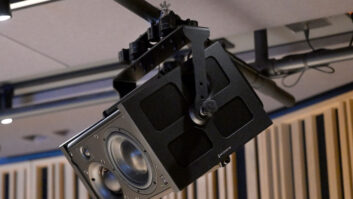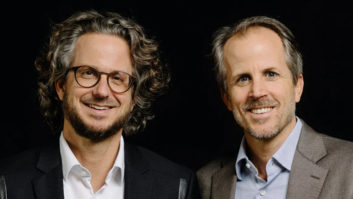
The renovation of Ruth Eckerd Hall (pictured), part of the Richard R. Baumgardner Center for the Performing Arts, was funded in part by the city of Clearwater, Fla. All except the outer shell of the Frank Lloyd Wright-inspired building was ripped apart and redesigned. Improvements included new restrooms, a connecting lobby between the east and west sides of the building, an educational wing and a studio theater.
To round out the renovation, a new sound system was chosen. “The choice to use the Sennheiser IR assisted-listening devices was driven by the client,” says David Burke, senior project engineer for SPL Integrated Solutions (Columbia, Md.), who designed the audio systems at Ruth Eckerd Hall. Burke specified five Sennheiser SZI1015 emitters and a SI1015NT modulator, along with 16 RI250 IR headsets. Carlton Audio (Ft. Lauderdale) completed the installation. Additional audio consulting was provided by sound designer Richard Closs of Acentech (Boston).
“With the system we had before,” says Ruth Eckerd Hall sound engineer Bill Camillo, “we got a lot of complaints that the batteries weren’t charged or that people couldn’t hear properly.”
The Sennheiser IR system uses one connection point, and is distributed to patrons in one piece, which goes around the user’s neck and in the ears. “It really fulfilled our needs for ease-of-use, ease-of-charging and ease-of-distribution to audience members,” Camillo says.
Three SZI1015 transmitters were installed on the catwalks above the stage using Sennheiser GZG1029 pipe mounts. Two additional units were placed on the tympanum on either side of the center speaker cluster by way of WM1 wall mounts. According to Burke, “By adding the two units on the tympanum, we cover about 90 percent of the seating areas.”
The system is powered from a central location in the amplifier room to ensure that enough DC power is available. Two additional SZI1015 emitters were installed in the 182-seat studio theater, as well. “We wanted the systems to be interchangeable,” Camillo says. Like the other audio equipment selected for the project, including a L/C/R configuration of d&b audiotechnik C Series main speakers, the SZI1015 system was designed to blend in with the architecture of the building. “You really have to look for the emitters to notice them,” Camillo says.
Other components of the audio system include a BSS Soundweb 9088ii-LL digital signal processor with three BSS 9008 slaves and Tannoy CMS65-15 ceiling speakers as frontfills and a Midas H3000 mixing board at FOH.
“We can bring in a few more shows a year through this renovation,” Freedman says. “We can program the main hall year round, and we can program a broad variety of acts.”
For more information, please visit here.

